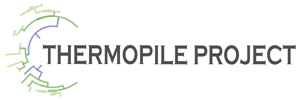Reference Information
The Thermopile Project has extensively surveyed existing composting technology, practices and regulations. We have organized this information into four main categories:
Each category is comprised of a collection of published documents, project summaries and news articles.
The following documents provide general background and support the need for the Thermopile Project:
- This historic article from the British Farmer’s Magazine was published in 1840 explaining the value of night soil, and how it was handled and applied in a beneficial way to agriculture until Sir Thomas Crapper invented the conventional flush toilet and created the modern waste treatment problem.
- Initial studies in the UK show that composting sanitary waste can replace a substantial portion of the chemical fertilizers used in UK agriculture. The article discusses the energy impact as well as the environmental and economic impact of Thermopile-type products versus chemical fertilizer.
- Swedish Eco-Villages have pioneered non-water transport sanitary waste systems. This report compiles by the Clean Baltic Coalition explores many of the Eco-Villages in Sweden that have adopted alternative waste treatment practices.
- TheEcological Sanitation movement has been a major factor in exploring the potential of dry sanitation, also known as urine-diversion composting. This document explores several variations of urine-diverting toilet systems and their implementation in developing countries.
- Valuing decentralized waste treatment is a report that was compiled for the US EPA and represents a good overview of the issues surrounding decentralized wastewater treatment systems.

